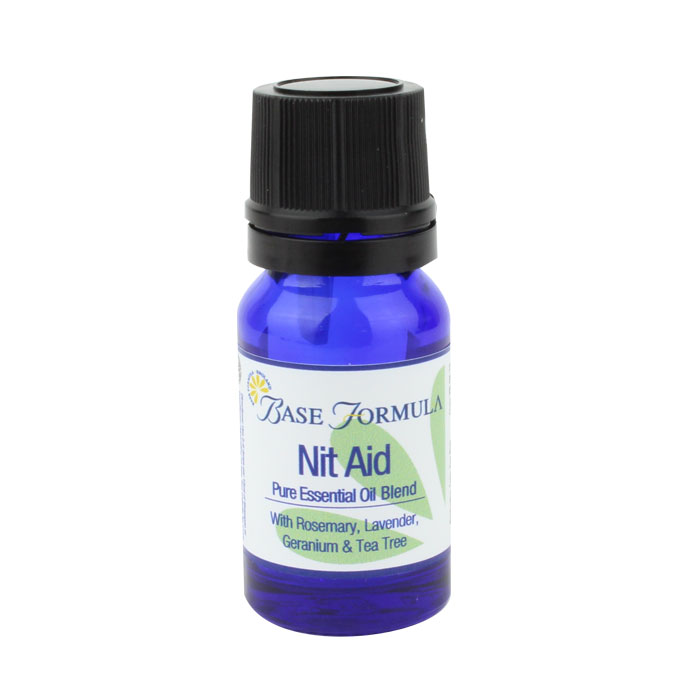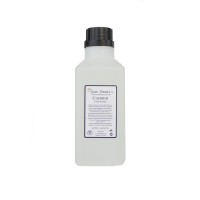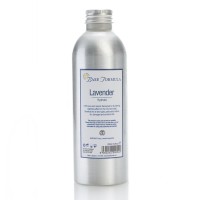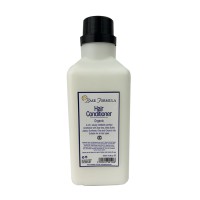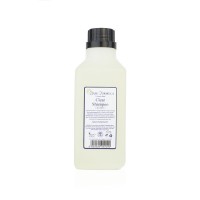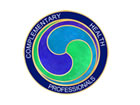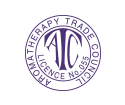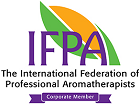Nit Aid Pure Essential Oil Blend (10ml)
- Product Code: PB-NA-10
- Availability: In Stock
A 100% natural blend of Rosemary, Lavender, Geranium and Tea Tree essential oils to aid with the removal and prevention of head lice.
-
£5.94
- Ex Tax: £4.95
Our Nit Aid pure essential oil blend contains 100% pure Rosemary, Lavender, Geranium and Tea Tree oil to help remove and deter head lice.
This all-natural aromatherapy oil is completely chemical free and much kinder on the skin and hair than over-the-counter head lice treatments – many of which contain toxic chemicals that can be absorbed into the skin.
Nit Aid contains a synergistic blend of pure essential oils that are known for their lice deterring properties. These carefully selected oils will also help to soothe itching and irritation whilst gently nurturing the hair and scalp.
Nit Aid can be used in a variety of ways:
To help find and remove head lice after infestation mix the Nit Aid blend with a carrier oil such as Coconut, Grapeseed or Sunflower oil and massage thoroughly into dry hair and scalp, paying particular attention to the areas behind the ears and the nape of the neck. For a small child or short hair mix 45 drops of Nit Aid with 50ml of carrier oil, or 65 drops in 75ml of carrier oil for longer or thicker hair. Use enough oil to ensure that the hair is completely covered and leave on for at least 15 minutes (ideally 60 minutes if you can). The oil will help to trap the lice and loosen the eggs from the hair making them easier to remove.
To remove, section off the hair, then comb through small/thin sections from root to tip with a fine-toothed nit comb (check out the Bug Buster® Kit which is recommended by the NHS ). Make sure that you rinse the comb after each comb-through to remove the lice and eggs and prevent re-infestation.
Once complete, shampoo as normal. We recommend massaging shampoo into the hair before wetting it, as this will help to remove the oil. You shouldn’t need to use a conditioner as the oil will leave the hair beautifully soft and shiny.
You should repeat this process every 2-3 days until you have removed all the lice and eggs. Continue to check on a weekly basis to ensure that all lice and nits are completely gone.
Head lice have quite a distinct life cycle. Adult females lay eggs that stick to the hair shaft, near the scalp. These hatch into nymphs after 7 days and the nymphs turn into adult lice after a further 7 days. Adults can live in the hair for up to 30 days, with the females laying up to 8 eggs per day. Repeating a head lice treatment is therefore often required to remove any new lice that hatch from leftover eggs.
Nit Aid can be added to your regular shampoo and conditioner to help keep head lice at bay. Alternatively mix into our fragrance free shampoo and conditioner bases.
- For children aged 3 to 5 mix 2 drops of oil per 15ml of shampoo or conditioner
- For ages 6-12 mix 3 drops per 15ml
- For children over 12 use 6 drops per 15ml
You can also mix 4 drops of Nit Aid into 500ml of warm water and pour through the hair as a final rinse after shampooing and conditioning.
Head lice are repelled by the odour of the essential oils, so keeping the smell of Nit Aid in the hair can help to prevent re-infestation. For ongoing protection mix 10 drops of Nit Aid and 125ml of water or Lavender hydrolat in a spray bottle. Shake thoroughly before use and spritz lightly through the hair on a daily basis.
SAFETY ADVICE: Never apply undiluted to the skin or hair. Do not use Nit Aid if pregnant, suffering with epilepsy or on children under 3 years old. Avoid contact with the eyes. In case of contact with the eyes, rinse thoroughly with clean water.
More information on head lice
According to the NHS “Head lice are small insects, up to 3mm long, and can be difficult to spot”. They are a brownish-grey in colour and lay cream-coloured eggs close to the skin. When the lice hatch they leave behind empty egg shells, which are known as ‘nits’. The nits are small and white and look like dandruff. Lice feed on humans by biting and sucking our blood.
Professor James Logan, from the London School of Hygiene & Tropical Medicine, and an expert in head lice and other arthropods, states that lice need heat and a constant supply of blood to survive and that they quickly become stressed when they’re not attached to the hair. He advises that once they leave the scalp area, they will die within 24 hours. It is therefore a myth that head lice can live in bedding, brushes and clothes etc.
As a precaution, you may wish to wash the clothes, bedding, brushes and hair accessories that are used on a daily basis during infestation. The general advice is to wash on a minimum 55°C cycle and/or tumble dry on a high heat for 30 minutes. Combs, brushes etc can be soaked in hot water of at least 55°C for 5-10 mins. It is worth remembering though, before you go on a mad cleaning frenzy, that lice like to stay firmly attached to the head in order to survive, so it is quite rare to find them on pillows, brushes, clothing, furniture or other surfaces.
The final thing to note is that anyone can get head lice. The assumption that they’re attracted to ‘unclean’ hair is another myth. If they have a warm environment and a plentiful supply of blood they will live in ANY hair. Lice do not fly but can crawl very quickly. They are transmitted via head to head contact (even a quick cuddle) or by sharing the same bed (if heads are close together). It is therefore essential to check the whole family as soon as one person has head lice, as they can quickly spread.
- Itchiness and signs of a rash particularly behind ears and nape of neck
- The feeling of something moving in the hair
- Dandruff-like spots that are firmly attached to the hair and will not brush out
Professor James Logan also states that serious infestations can make a person feel unwell. The itching may disturb sleep, causing tiredness. The lice also release an anti-coagulant into your system when they suck your blood, and this can cause flu-like symptoms. It is thought, that this where the term ‘feeling lousy’ came from.
Related Products
Coconut (Fractionated) Carrier Oil
£7.14 Ex Tax: £5.95
Lavender Hydrolat
Lavender Hydrolat (Hydrosol) has a soothing, balancing effect on the mind and body. Its gentle re
£11.10 Ex Tax: £9.25
Hair Conditioner ORGANIC (600ml)
A rich, velvety, COSMOS certified conditioner blended with nourishing Shea Butter, Jojoba, Sunflo
£10.80 Ex Tax: £9.00
SLS Free Shampoo (600ml)
£13.02 Ex Tax: £10.85

